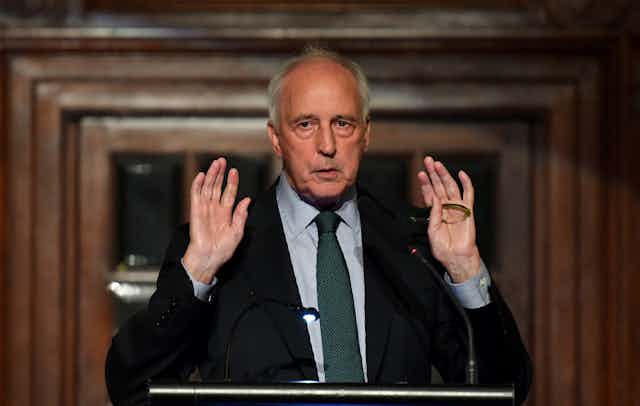Talk about a solution seeking a problem.
Former prime minister Paul Keating this week called for a national insurance scheme to support Australians aged 80 and over.
He says it will be needed to pay medical and other bills when super runs out, often around the age of 80.
We already have such a scheme. It’s called the age pension.
Read more: We won't fix female super until we fix female pay, but Labor's ideas are a start
We are prudent in retirement
As it happens, research from the Productivity Commission has found that older Australians are generally prudent in retirement.
Less than 30% of superannuation assets are taken as lump sums, and the amounts taken are small; typically around A$20,000 per person.
These amounts are usually used to pay down debt or to buy goods and services that can be used throughout retirement, such as home improvements and consumer durables.
The Productivity Commission reports concern that some retirees run down their superannuation balances too slowly.
The former prime minister’s idea isn’t new. He has been talking about an extra superannuation contribution of 2-3% of salary for some years. He badged it “Super Mark II” at a forum organised by Australia’s richest man, Anthony Pratt, executive chairman of Visy Industries, last November.
Yet we would be asked to pay another levy
It would require all taxpayers to pay a levy, as for Medicare, which would be used to fund an insurance scheme that would pay age care and health bills for those who lived beyond 80.
Like any insurance scheme, it wouldn’t pay out to those who paid the levy but didn’t satisfy the payout requirement – in this case living beyond 80.
It would be a form of longevity insurance, just like the age pension, which is funded from general taxation.
Which not all of us would get back
On its face it would benefit women more than men, because on average they live longer.
But funding it would disproportionately hurt women. On average women’s wages are lower than men’s, meaning they would notice more an extra 2-3% of their employers’ salary bill being directed away from their pay packets. It would be on top of the 12% of salary Labor and the Coalition have pledged to eventually direct to super in a few years’ time, up from the present 9.5%.
Those women might be better served by setting the age pension and rent assistance at reasonable levels, the sort that are needed to live properly in retirement, as was originally intended.
And we already have access to lifetime anuities
The proposal also cuts across the current drive to get people to take their super payouts as deferred annuities that keep paying out for as long as they live.
These products have been available privately for some time, but their tax treatment and their treatment under the age pension means test punish people who take them up.
One of the recommendations of the 2014 Financial System Inquiry (Murray Inquiry), was that the industry further develop these products and the Treasury examine removing barriers to taking them up.
Even though they are not popular
The regulations that govern superannuation have already been amended to make it easier.
One of the problems is that, with current low returns on safe investments, such products require a large amount of capital to deliver a low income, whereas account-based pensions can do better, at least until they run out - and they are more flexible.
Adequate retirement incomes are fundamental to the dignity of Australians as they age and live longer.
Longevity is what the pension is for
For women, typically on lower working incomes than men, the continued safety net of the pension is vital to providing for them.
For the growing number of women who rent in retirement, adequate rent assistance is essential, and the current rate should be reviewed with a view to being lifted.
Doing things properly would help more people, more easily, than yet another add-on to an already complicated web of schemes.

